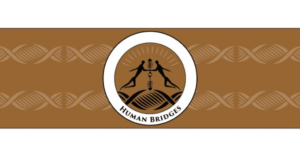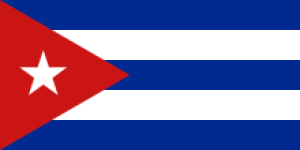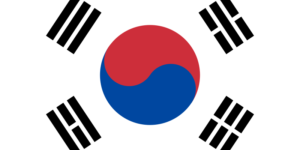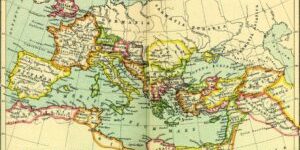Great Lakes Of Africa ~ From Problems To Solutions
No Comments yet “People are the problem, People are the solution” the keynote speaker’s concluding words at the first Great Lakes of Africa Conference held in Uganda in May 2017, generated a flurry of nods and agreements. Entebbe hosted over three hundred delegates at the shores of Lake Victoria, to discuss sustainable solutions for the pressing problems of the African Great Lakes. Spanning across 11 countries (Burundi, Democratic Republic of Congo, Ethiopia, Kenya, Malawi, Mozambique, Rwanda, South Sudan, Tanzania, Uganda, and Zambia), the African Great Lakes region is large and indispensable as it provides livelihoods to millions. It was interesting to see a variety of stakeholders, including government leaders, regional and basin authorities, inter-governmental organizations, development and funding agencies, non-governmental organizations, community groups and the private sector come together to discuss challenges and solutions for this special region. Presentations made by delegates resounded the problems of pollution, over extraction of natural resources, pressure on natural resources, changes in land use and need for further research in many areas. For me, it echoed some of my thoughts on what I have observed in the Lake Chilwa Basin in southern Malawi. Lake Chilwa, although a smaller lake compared to the giants such as Lake Victoria and Lake Tanganyika, is very important for the millions that live in its basin. And indeed, I have also seen in the Lake Chilwa Basin that people are the cause of its problems and certainly, they are the solution too.
“People are the problem, People are the solution” the keynote speaker’s concluding words at the first Great Lakes of Africa Conference held in Uganda in May 2017, generated a flurry of nods and agreements. Entebbe hosted over three hundred delegates at the shores of Lake Victoria, to discuss sustainable solutions for the pressing problems of the African Great Lakes. Spanning across 11 countries (Burundi, Democratic Republic of Congo, Ethiopia, Kenya, Malawi, Mozambique, Rwanda, South Sudan, Tanzania, Uganda, and Zambia), the African Great Lakes region is large and indispensable as it provides livelihoods to millions. It was interesting to see a variety of stakeholders, including government leaders, regional and basin authorities, inter-governmental organizations, development and funding agencies, non-governmental organizations, community groups and the private sector come together to discuss challenges and solutions for this special region. Presentations made by delegates resounded the problems of pollution, over extraction of natural resources, pressure on natural resources, changes in land use and need for further research in many areas. For me, it echoed some of my thoughts on what I have observed in the Lake Chilwa Basin in southern Malawi. Lake Chilwa, although a smaller lake compared to the giants such as Lake Victoria and Lake Tanganyika, is very important for the millions that live in its basin. And indeed, I have also seen in the Lake Chilwa Basin that people are the cause of its problems and certainly, they are the solution too.
Why people are the problem comes to light when one looks at anthropogenic causes of Lake Basin changes. They include watershed deforestation causing sedimentation in lakes, over abstraction of water for irrigation leading to lowered water levels of lakes, poor solid and sewage waste management leading to eutrophication, use of toxic chemical for agriculture in lake basins and competing land uses leading to reduced land for conservation. Several examples were presented including the case of Kenya’s Lake Turkana which is renowned as the world’s largest desert lake. Hydropower development and large-scale irrigation plantations have depleted river inflow into the lake. As a result, the lake level has already fallen two metres, and the local fishing industry has taken a toll. It was chilling to hear at the conference that this lake has been likened to “an African Aral Sea in the making”. Nearby, at Lake Victoria, which employs over 1 million people, over the years, impacts of eutrophication and climate change, are threatening its critical ecosystem services. While, Lake Tanganyika has experienced various ecological changes including lake warming and heavy pressure on various fisheries resources. Lake Malawi is also no exception, where degraded habitats, declining fish stocks and agriculture runoff into the lake all threaten livelihoods of those depending on this lake. Almost all presenters accepted that rapid population growth in the region puts tremendous pressure on the natural resources in the ecosystems. Some called for an integrated approach, where women’s needs especially that of family planning should be considered and population numbers managed.
The flip side of the coin is how people become the solution in the Great Lakes region. This was narrated by many presenters with examples of success stories across the great lakes region, which was inspirational. I listened to presenters from Birdlife International, who spoke about using the concept of “Altitudinal gradients” within the African Great Lakes Region (AGLR) which have extraordinary Biodiversity and Ecosystem Service Values. The CRAG (Climate Resilient Altitudinal Gradients) approach uses multi-scale landscape units with a minimum altitudinal range of 1,000 meters to come up with a CRAG Intevention Plan (CIP), which is spatially explicit and designed to enhance climate resilience based on the best available scientific and socio-economic evidence. This has helped deal with soil erosion and sedimentation in the rivers and lakes and examples from Kivu-Rusizi Watersheds was provided. Elsewhere in Uganda, Rwanda and Malawi, development of best practices for cage fish farming has helped to increase fish production. While at Lake Tanganyika, Collaborative Fisheries Management (CFM) is bearing fruit and communities are gaining improved awareness on fisheries policies. Successes from Lake Malawi was reported regarding community-managed fish sanctuaries; ecosystem and rights based approach to participatory fisheries management; integrated multiple-technology catchment activities to protect key fish breeding grounds; and improved fish handling and processing techniques, such as Vessel Monitoring System (VMS) to manage commercial trawlers and reduce conflicts between artisanal and commercial fishermen. Good science is being combined with local knowledge to help communities come up with solutions in a participatory manner was illustrated using several examples from the region. In Ethiopia, Lake Victoria Basin countries and in Malawi, “Population, Health and Environment” (PHE) approach is bearing good results. Breaking siloed approaches and moving towards a more integrated approach was the way forward, according to some presenters.
Zooming in to Lake Chilwa in Malawi, where I had worked for five years, I have seen both sides of the coin where people pose problems and solutions to this fragile ecosystem. Rapid deforestation increasing runoff and soil erosion; increasing demand for agriculture land causing farmers to farm on hill slopes, river banks and wetlands, causing siltation in the lake; disposal of wastes and excessive use of fertilisers and pesticides in the catchments have all contributed to Lake Chilwa’s problems. This results in loss of habitats, poor water quality and decline in provisioning ecosystem services. But the paramount problem that drives majority of the difficulties mentioned is that of population growth. We cannot ignore the aspect of population growth when it comes to managing fragile ecosystems such as those in the Great Lakes region. Africa’s population has grown from 582 million in 1987 to 1.1 billion in 2013 (World Bank Indicators, 2017). When large populations are dependent on natural resources for their livelihoods, it is no surprise that their activities cause stress to the lake ecosystems. Avoiding to address this reality is detrimental to us. Many presenters converged at a prognosis that for long-term sustainable management in all the lakes necessitates a stronger socio-ecological approach and population growth was mentioned as a factor exacerbating the problems in several countries in this region. In the Lake Chilwa Basin, the PHE approach was found to be more effective and responsive to community needs, rather than sectoral approaches. Consequently, sustainable management of Great Lakes region is not only an environmental issue or socio-economic issue, but also a population issue and we as people need to open our eyes to this reality and together come up with solutions. Let us the people, stand together, for the sake of the millions who depend on the life giving Great Lakes of Africa.
Dr. Deepa Pullanikkatil – Post-Doctoral Research Fellow, Rhodes University, South Africa – Founder, Abundance, Malawi
Go to: http://www.deepapullanikkatil.com/
You May Also Like
Comments
Leave a Reply







